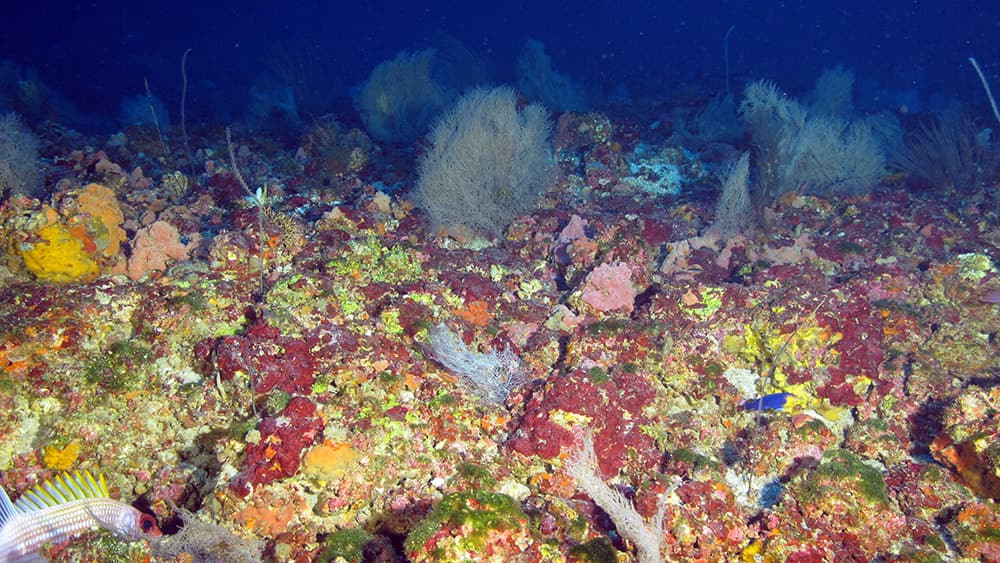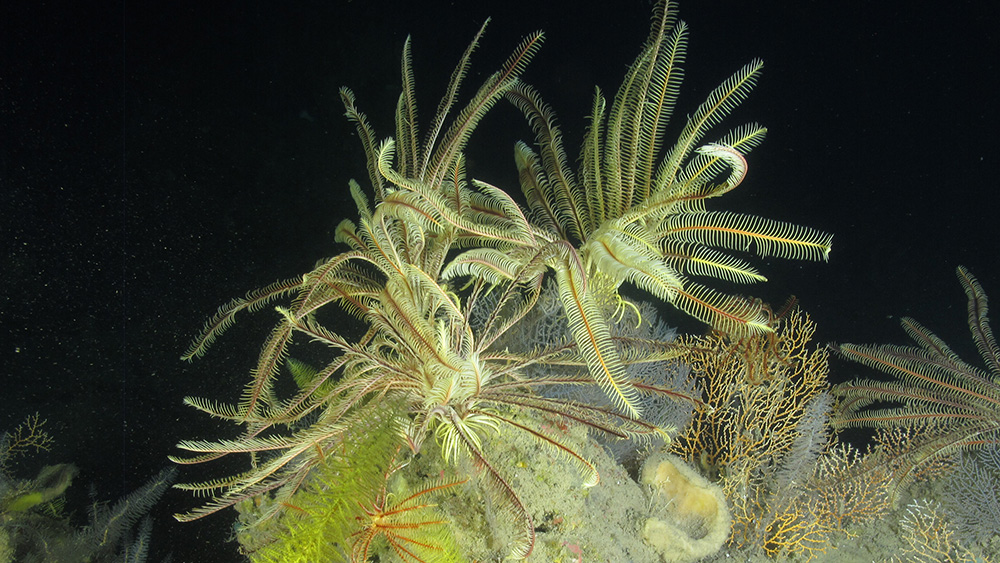
While the sanctuary is well known for the beautiful coral reefs perched atop East and West Flower Garden Banks, these areas only account for a tiny fraction of the entire sanctuary. The majority of sanctuary habitats exist 130-725 feet (40-221 meters) beneath the waves in an area known as the mesophotic or "twilight" zone.
The term mesophotic comes from the Greek words for "middle" and "light," and refers to the fact that this zone doesn't have as much light as waters near the surface of the ocean, but it's also not completely dark. This is evidenced by the presence of some light-dependent organisms such as stony (reef-building) corals and algae.
Following are descriptions of several different types of habitat found within the mesophotic zones of the sanctuary.
Mesophotic Coral Ecosystems
Mesophotic Coral Ecosystems (MCEs) are deep communities of reef-building corals that occur on the deeper edges of coral reef zones, where there are still low levels of light that can support photosynthesis. They provide a connection between shallow coral reefs and deepwater coral assemblages, and habitat for a variety of species, including commercially and recreationally valuable fish.
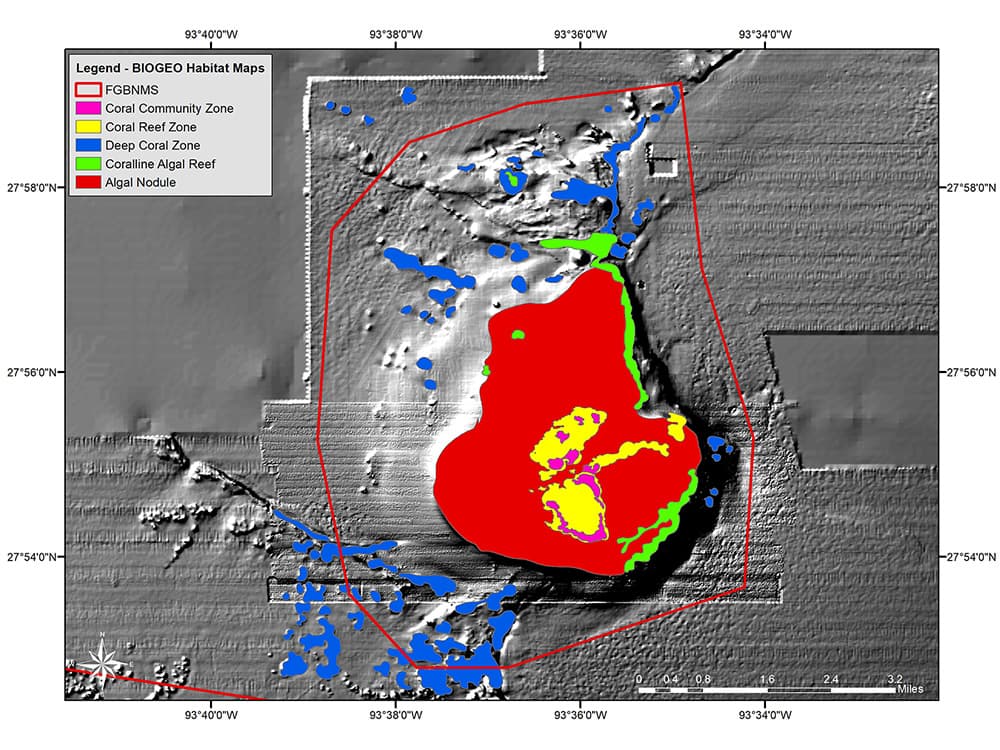
At East and West Flower Garden Banks, the coral reef extends from 60 feet (18 meters) to about 164 feet (50 meters) underwater and is comprised of both shallow coral reef and mesophotic coral ecosystem. Here the MCE is almost an extension of the shallower coral reef. The two zones share many common species, but the corals in the MCE grow in a plate-like form rather than the boulder form seen on the shallower reefs.
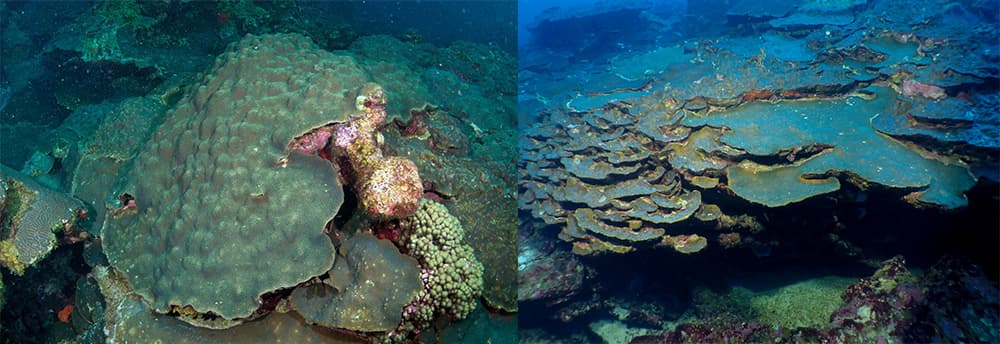
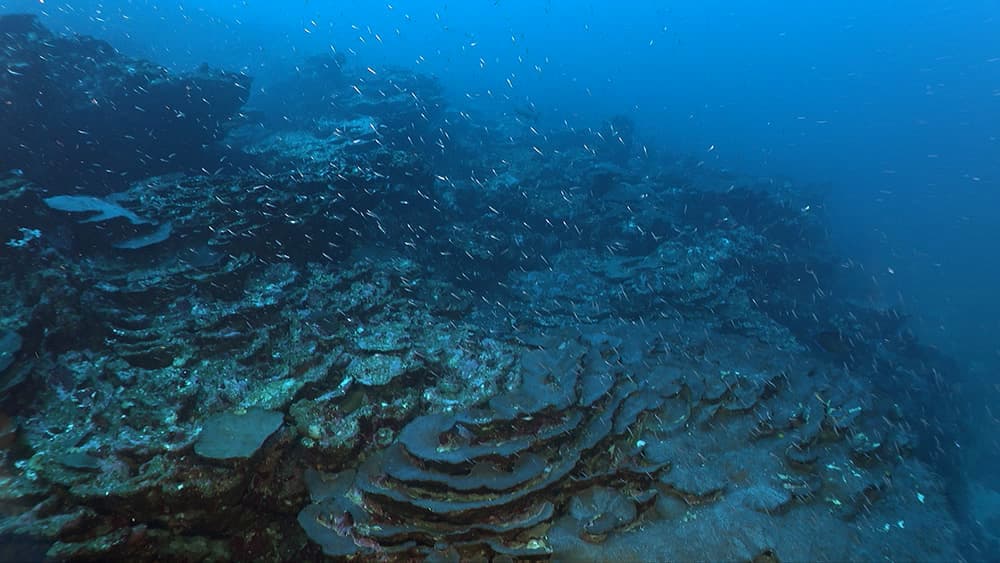
In small areas on top of McGrail Bank, which peaks 144 feet (44 meters) below the surface, we find a unique mesophotic coral ecosystem dominated by blushing star coral, a reef-building species that isn't normally seen in such large quantities.

Deep Coral Zone
In the deepest part of the sanctuary's mesophotic zone, there are very few light-dependent stony corals. Black corals and octocorals, which are structurally different from reef-building corals, build coral forests that provide vertical relief and habitat for many other species. Brittle stars, crinoids, basket stars, shrimp, squat lobsters, and other invertebrates often perch in these corals for better access to foods floating by in the currents. Some may even feed on the corals themselves. Reef fish also use these corals for camouflage and shelter.
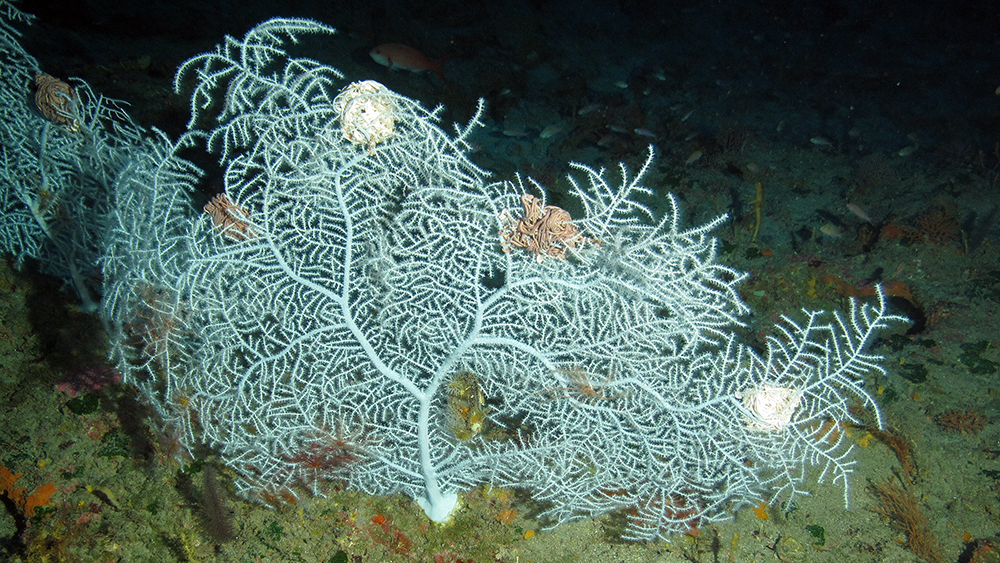
Black corals (Antipatharians) are named for the color of their spiny, internal skeletons made of chitin. These skeletons are flexible and move with currents of water that swirl around them. Externally black corals range in color from white to green to shades of orange, red, or yellow. Some grow in coiled, wiry shapes, or bottle brushes, but most grow in the shape of trees or bushes. Despite their appearance, they are animals, not plants. Like their more rigid stony coral cousins, black corals have polyps with tentacles in multiples of six.
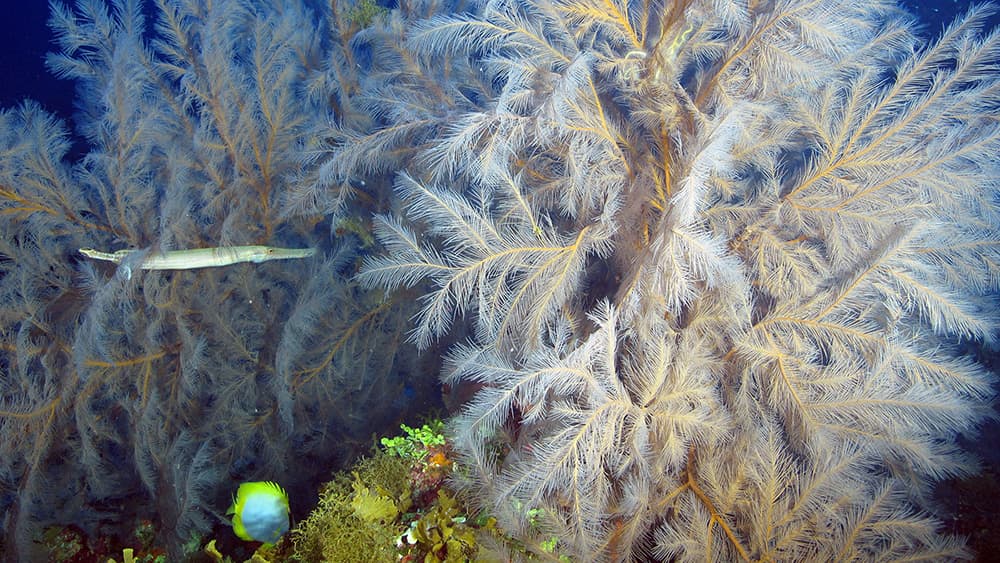
Octocorals (Alcyonarians), also known as gorgonians, are named for their polyps with eight pinnate (branching, feather-like) tentacles. Their skeletons are made of a combination of protein and calcium carbonate aggregates, but like black coral skeletons, they are flexible. Octocorals grow in a variety of shapes, but sea fans are probably the most recognizable. Many kinds of gorgonians can be found on shallow coral reefs around the world, but here in the sanctuary we only find them at mesophotic depths.
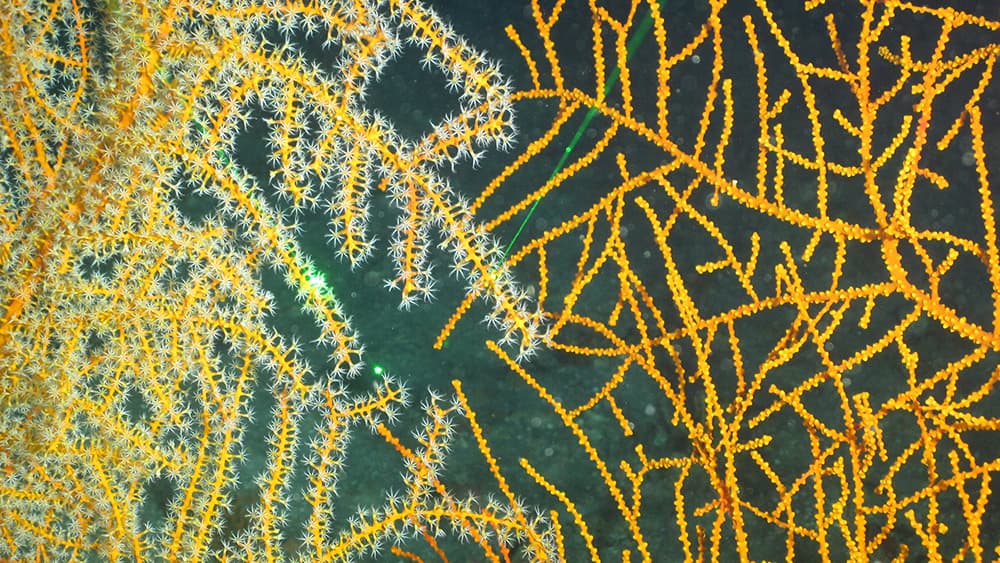
We certainly don’t know as much about these deep corals, and the creatures that live among them, as we do about the shallower water species. We just haven’t been studying them as long. But, we continue to explore and learn, building species catalogs as we go. And, we occasionally find new species! In the past 20 years researchers have identified new shrimp, squat lobster, and black coral species in these areas.
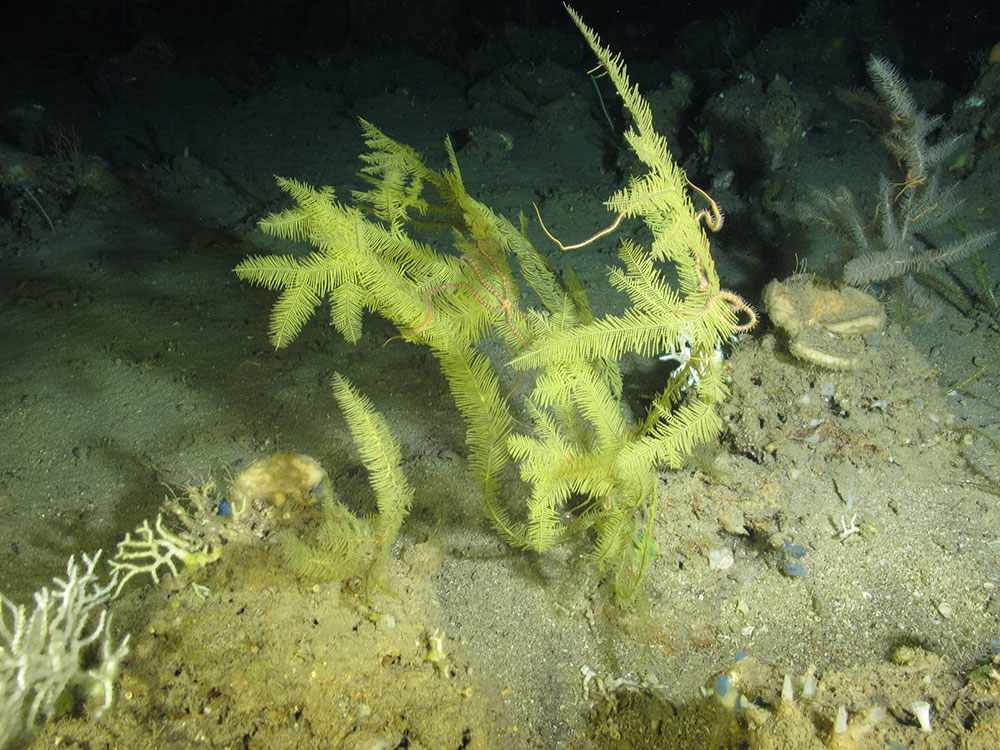
Coralline Algal Reefs and Algal Nodule Habitat
In between the coral reefs and the deep coral zones lie extensive areas dominated by crustose forms of algae. These are plants, rather than animals, that create calcified structure.
Some forms of coralline algae are leafy and almost look like corals, while others are more encrusting and serve to help cement the reef together. These encrusting forms are also important building blocks of shallow coral reefs, where they create a stable solid surface and provide chemical cues to tell coral larvae they have reached good habitat on which to settle and grow.
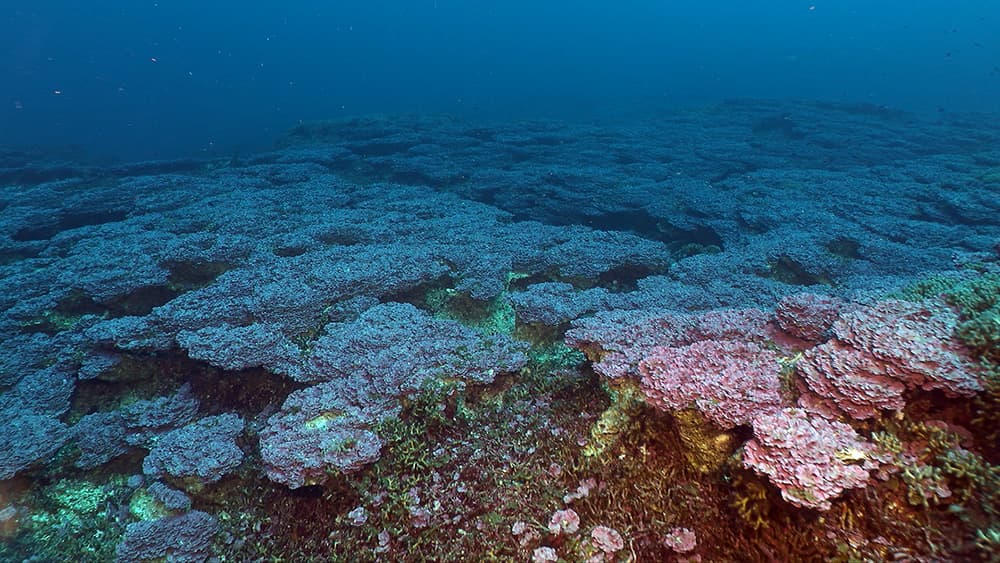
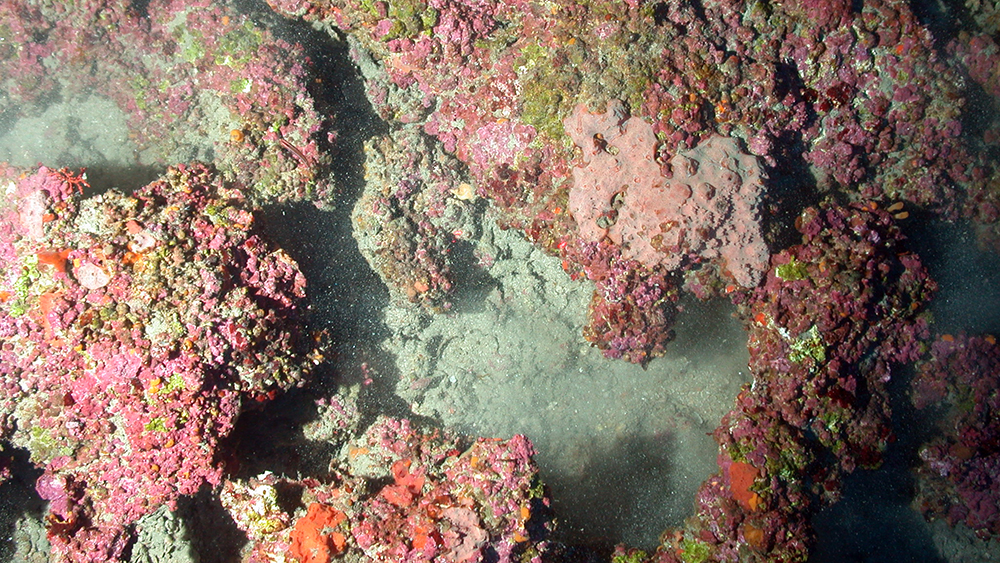
Other algae form rhodoliths, or algal nodules, that look like rocks. Some are created entirely of coralline algae, while others are formed by the algae encrusting over other items.
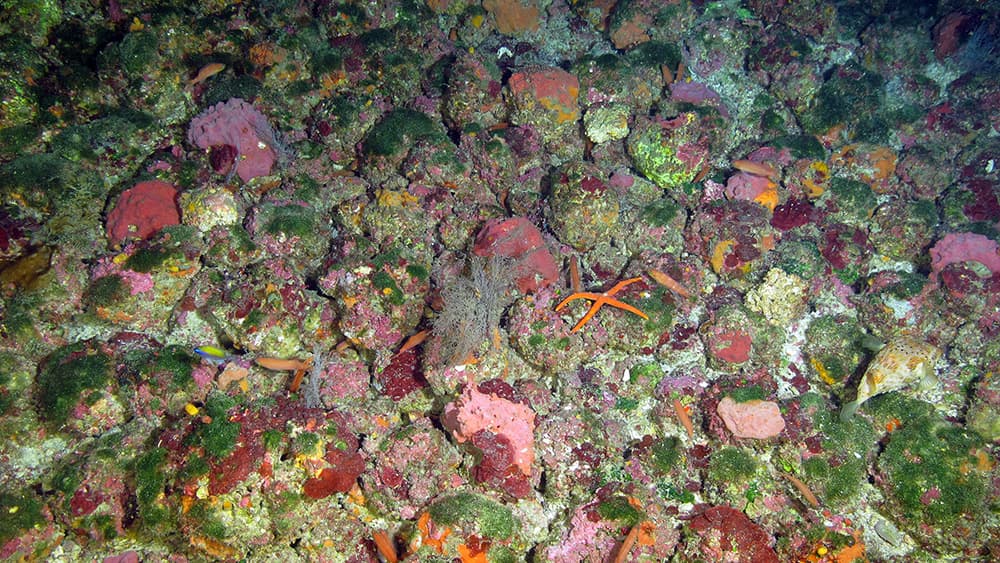
Black corals, octocorals, sponges, and leafy algae also occupy the algal nodule zone, showing the transitional nature of this habitat.
